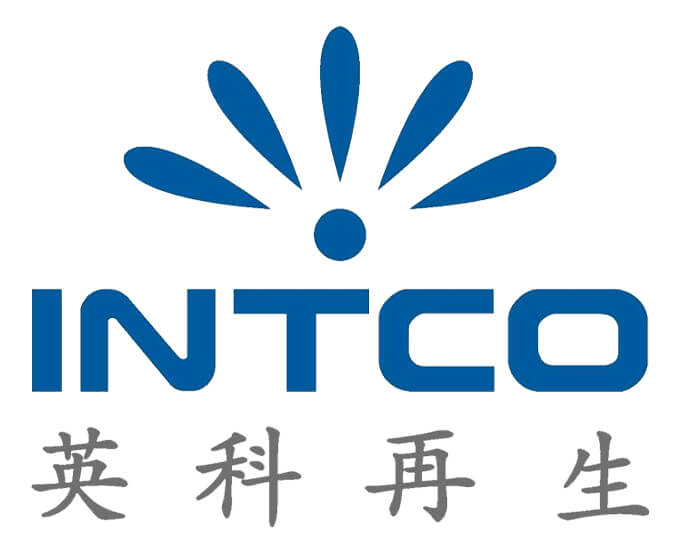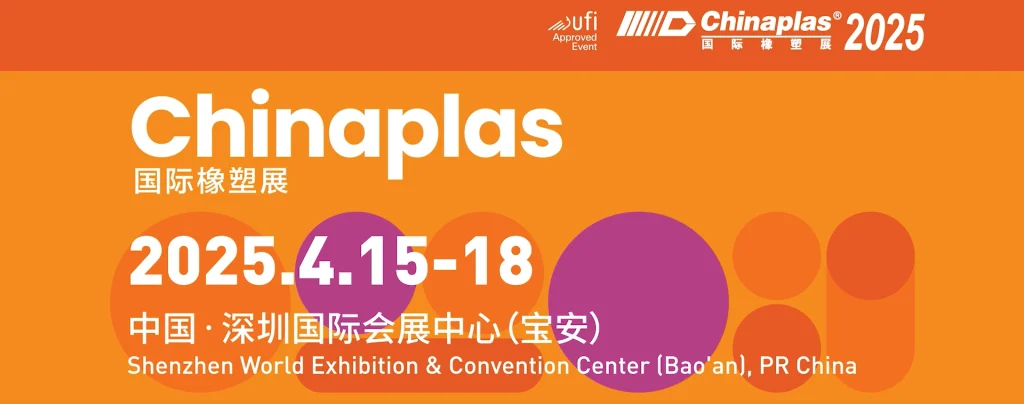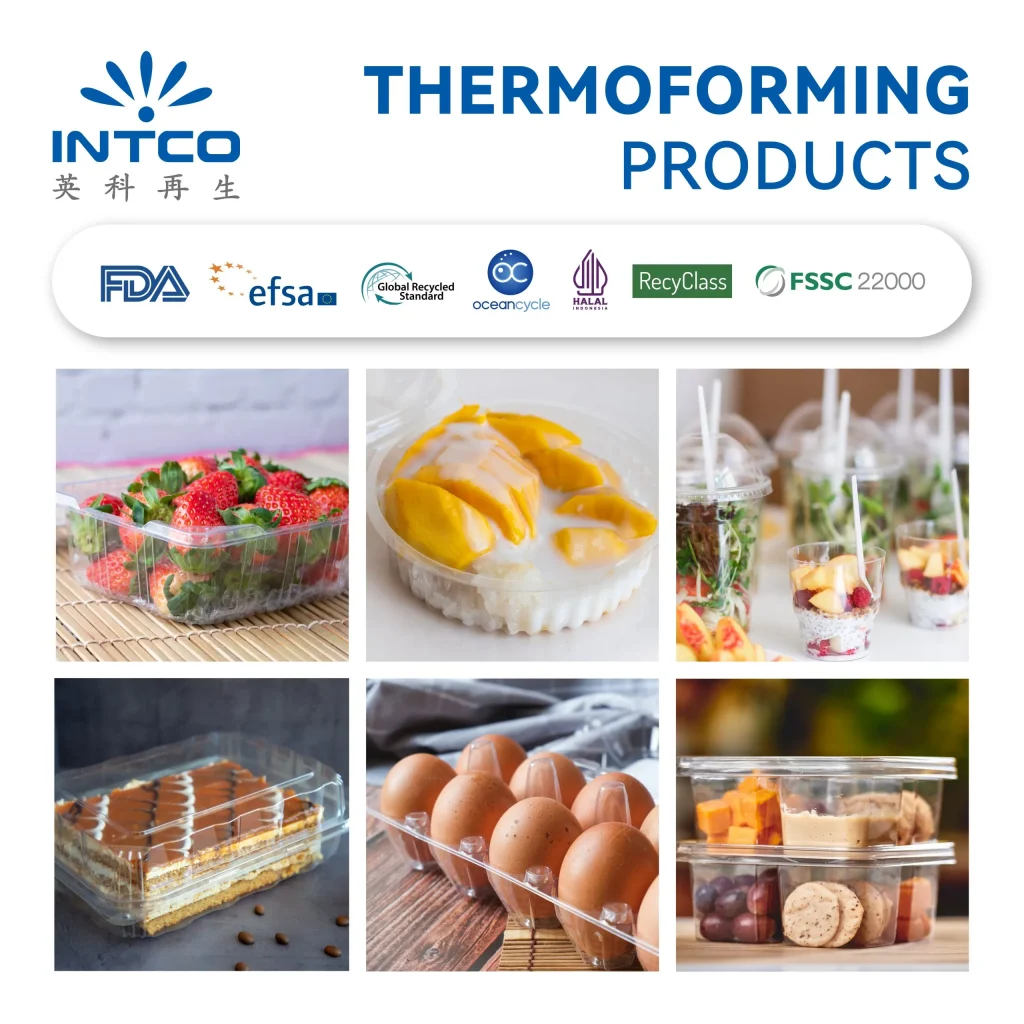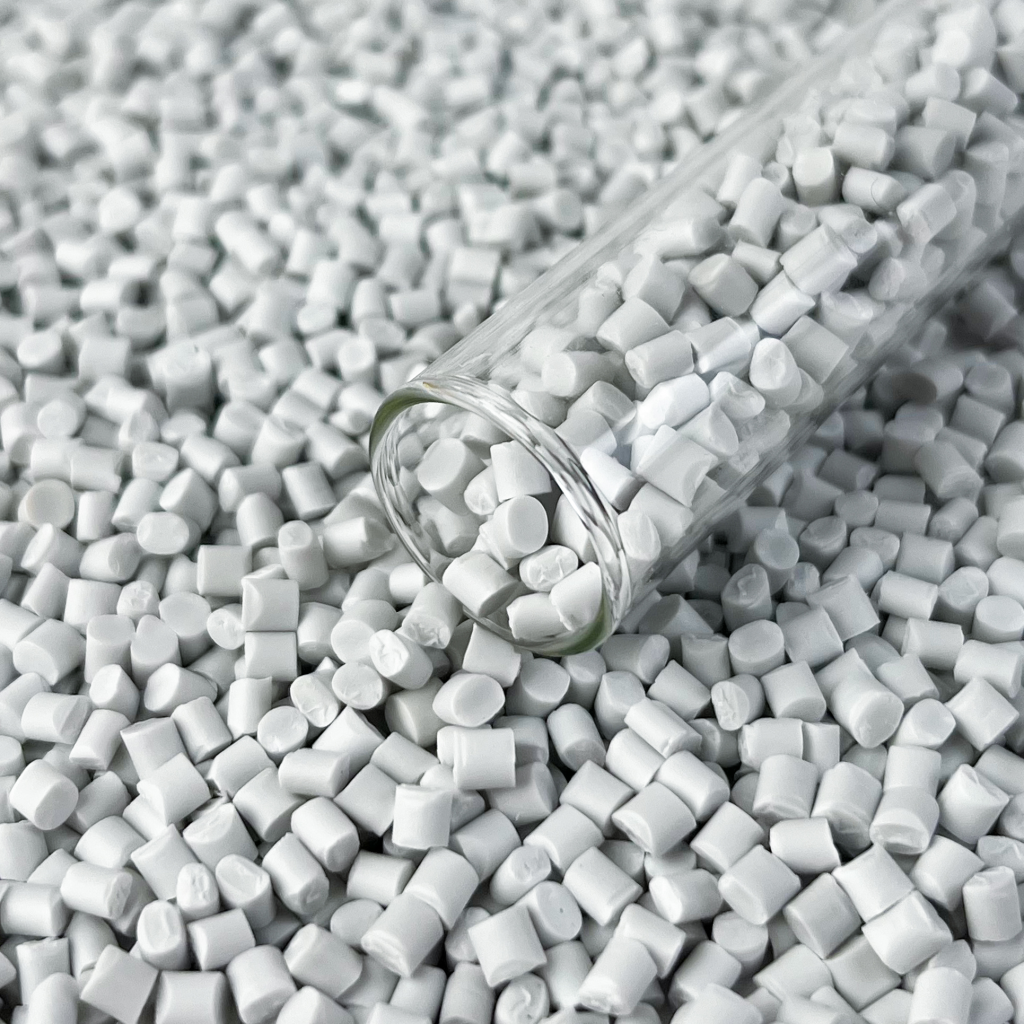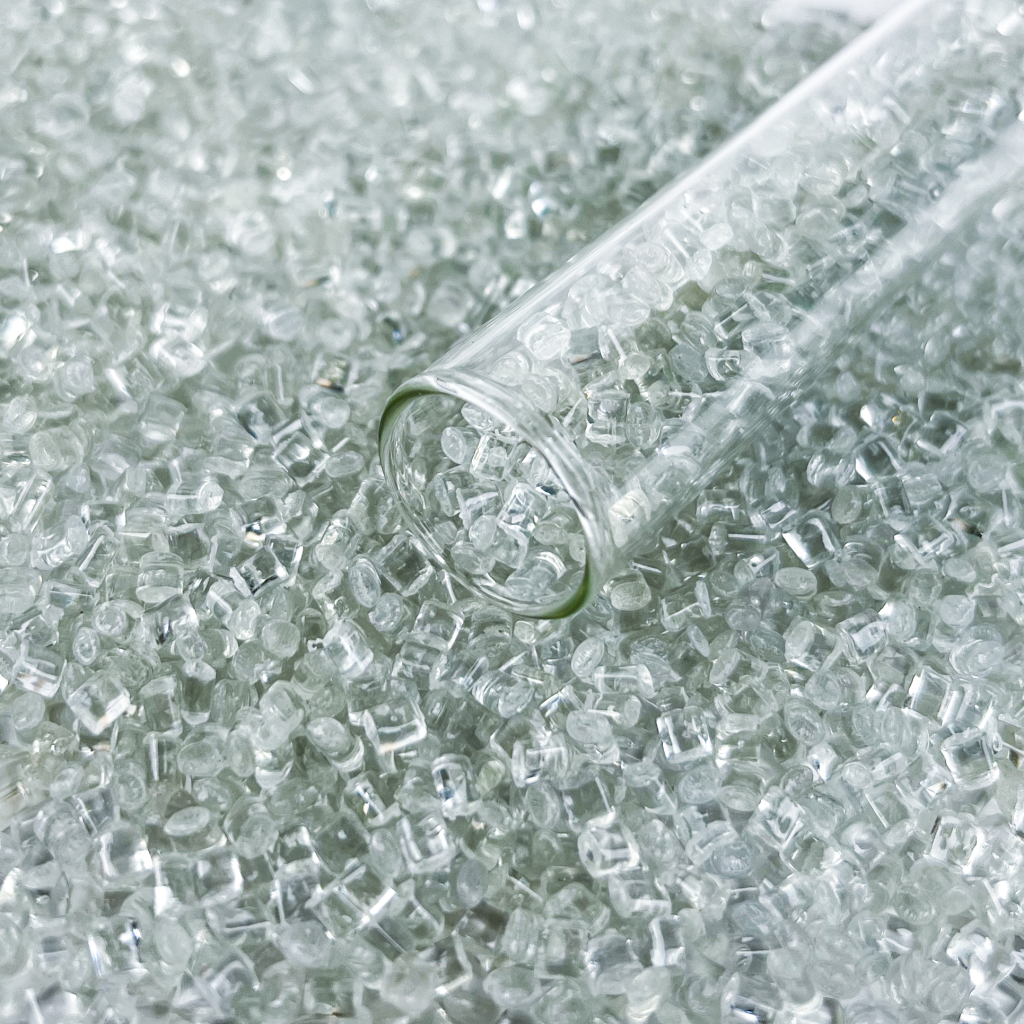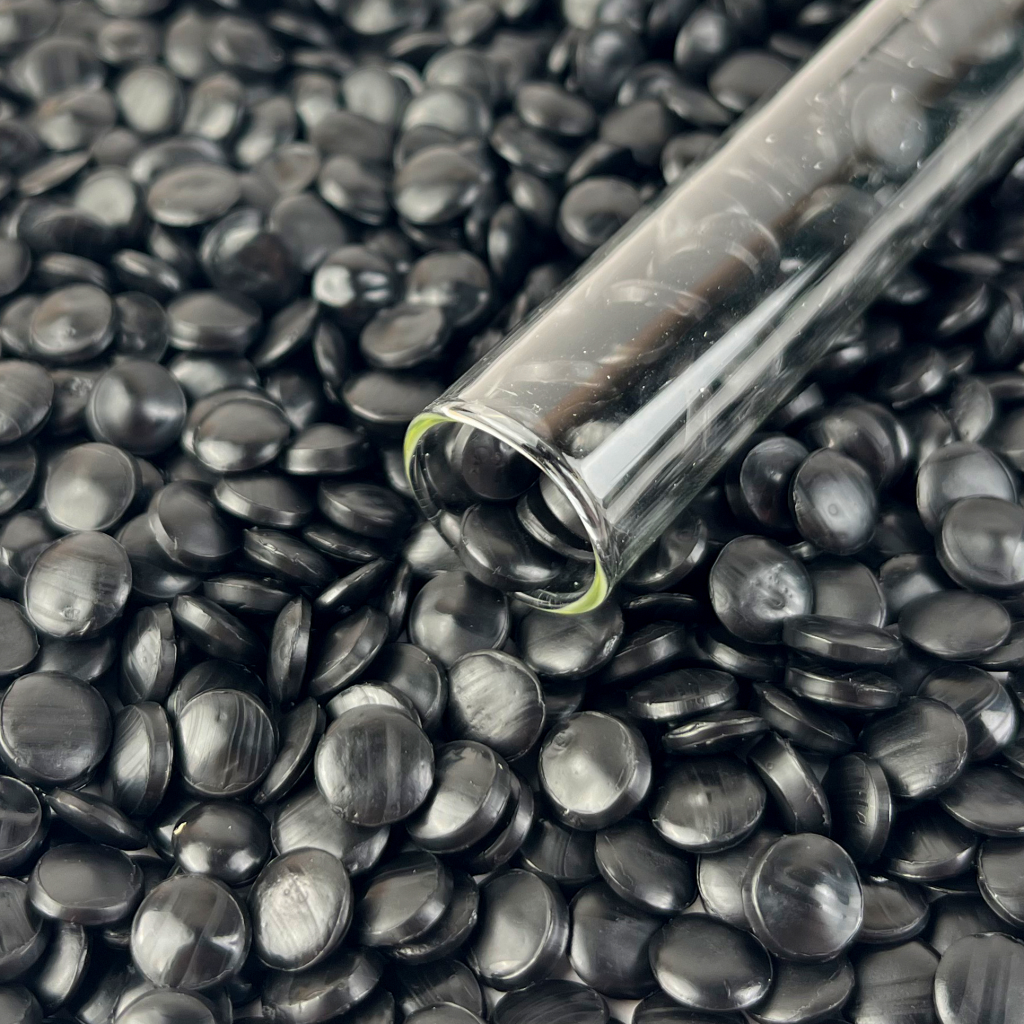Recycled PET (rPET) which plays a role, in sustainability efforts, comes mainly from the recycling of used bottles that are often used for drinks and personal care items, by consumers triggering substantial plastic waste amounts in the environment. These bottles go through a recycling process where they are collected cleaned and transformed into rPET material. The effectiveness of this recycling system plays a role as it leads to increased rates of recovery contributing to eco-packaging alternatives. The rising concern, within society regarding sustainability has resulted in people engaging in recycling initiatives and consequently enhancing the availability of rPET materials.
Industrial Plastic Waste
Another important source of rPET besides bottles used by consumers comes from plastic waste, like PET materials from manufacturing processes known as pre-consumer waste. This surplus material generated by manufacturers can be collected efficiently. Reintroduced into the recycling cycle effectively. Utilizing industrial plastic waste not only helps companies reduce their footprint but also cuts down on production costs by incorporating recycled materials in new products. Partnerships between rPET manufacturers and industrial businesses are key, to improving the recycling system.
What Is the Process of Recycling PET Bottles?
The first stages of recycling bottles include gathering them up and then sorting and cleaning them out properly before moving them to recycling centers, for processing. At the recycling facilities where the bottles end up after the collection phase for sorting out process which involves separating PET from types of plastics and getting rid of any impurities or contaminants in them—all made possible by using advanced sorting technologies to maintain a high level of purity in the extracted PET material. Following the sorting phase comes the washing of these bottles to eliminate any labels or dirt sticking to them along with residues clinging inside—ensuring that the raw materials, for recycling are kept as pristine as possible before being reused. It’s crucial to follow these measures since contaminants can impact the quality of the rPET end product.
Melting, Filtration, and Polymerization Process
After the initial clean-up and organization stage comes the phase of recycling which involves melting down the bottles followed by filtration and polymerization steps The purified PET bottles are melted at a specific temperature to turn them into a thick liquid consistency This liquid material goes through filters to eliminate any remaining impurities Once filtered the liquid PET can then be transformed through a polymerization process into rPET pellets Transforming the rPET to preserve the characteristics of the resin ensures its suitability, for a wide range of uses.
How Can Manufacturers Optimize the Mechanical Performance of rPET?
To enhance the strength of recycled PET (rPET) manufacturers combine recycled PET materials together in a process known as blending. This method helps improve the quality of rPET, for use, in demanding applications by adjusting the ratios of recycled PET to meet specific customer needs. This technique does not increase the durability of products. Also ensures that they adhere to industry regulations. Customizing these blends further supports the cost-effectiveness of producing rPET.
Importance of Rheology and Thermal Analysis
The optimization of rPET performance is significantly supported by rheology and thermal analysis. Rheology helps in understanding how the material flows and behaves under various stresses, which is crucial for manufacturers aiming to produce high-quality products. By analyzing the thermal properties, such as melting temperature and crystallization rate, manufacturers can gain insights into how rPET behaves during processing. This knowledge ensures that production methods are aligned with material properties, allowing for efficient processing and improved final product quality. For a comprehensive solution in enhancing the performance of rPET, you may explore resources provided by Intco Plastic.
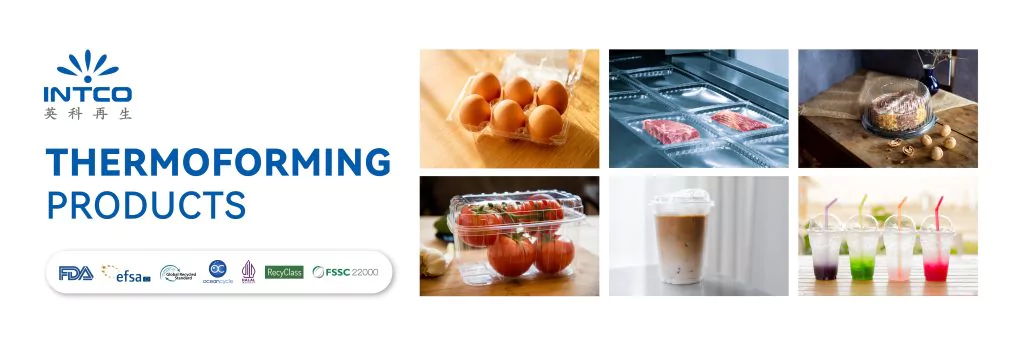
In conclusion, the effective sourcing and recycling processes for rPET have become imperative in today’s environmentally-conscious landscape. By leveraging the collection of post-consumer PET bottles and industrial plastic waste, rPET manufacturers can consolidate their supply. Moreover, improving mechanical properties through blending with virgin PET and utilizing advanced analytical techniques contributes to a robust recycling industry. As sustainability continues to grow in importance, you can explore Thermoforming Products and Food-grade R-PET Pellets to stay at the forefront of innovation in this sector.
What Are the Typical Applications of rPET?
Thermoforming Products
Thermoforming plays a role, in the packaging and manufacturing sectors by enabling the production of items using rPET materials. Known for their flexibility and durability which make them perfect for creating products like clamshell packaging and trays or blisters through thermoforming techniques. Using rPET not only helps companies lessen their dependence on materials but also supports the idea of a circular economy by recycling existing resources. Integrating rPET, into thermoforming operations enhances sustainability efforts while ensuring top-notch quality standards that attract customers.
Moreover, in the production of thermoformed products, manufacturers can customize the thickness and strength of the rPET sheet to align with specific application needs. This adaptability makes rPET not just a viable alternative but a preferred choice for creating efficient and eco-friendly products. With advancements in thermoforming technologies, you can explore how rPET maintains optimal performance without compromising on aesthetics. For cutting-edge solutions and innovation in thermoforming applications, refer to Intco Plastic.
Food-grade R-PET Pellets
Ensuring the safety and sustainability of food is vital when it comes to recycling materials designed for food-related uses like packaging items, for consumption. Manufacturers create food-grade R PET pellets following procedures to guarantee the quality and safety of recycled materials used in food packaging production. These pellets are made from consumer PET bottles that go through advanced cleaning and sterilization processes to remove any impurities and meet food safety standards. This enables companies to manufacture food packaging that prioritizes both concerns and consumer well-being.
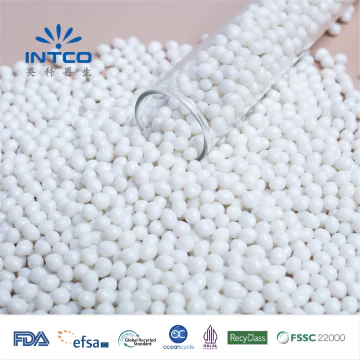
By adopting food-grade R-PET pellets in their processes, companies can significantly reduce their ecological footprint while meeting rising consumer demands for sustainable packaging solutions. The use of these pellets in food packaging applications highlights the transition towards more flexible and innovative recycling practices. This helps brands position themselves favorably in the market as proponents of sustainability. To discover more about how these food-grade pellets can enhance your product offerings, please visit Food-grade R-PET Pellets.
What Challenges Do PET Bottles Face in Production?
Managing Contamination Risks
Contamination poses a hurdle, in turning bottles into rPET during the production process As is crucial to have the collected bottles free from impurities like labels or residues to keep the recycled material top-notch Contaminants can mess up the whole recycling process resulting in subpar rPET that might fall short of industry norms Utilizing advanced sorting tech and rigorous cleaning methods are key, to reducing these risks and making sure only top-notch PET goes into recycling process.
Moreover, it’s crucial to educate customers about recycling practices to reduce contamination at its origin point. When customers know, about the ways to recycle the overall quality of materials that are received gets better noticeably. This has an impact on how efficient and dependable the production of rPET can be. For companies that manufacture rPET putting resources into state-of-the-art recycling technologies and educating consumers can lead to a decrease in contamination and an improvement, in production capacity.
What Solutions Are Available for Optimizing rPET Manufacturing?
When dealing with the obstacles, in the production of rPET materials there are multiple ways to enhance operations and guarantee top-notch results.
Collaborating with Advanced Recycling Technologies
By teaming up with organizations, in recycling technologies rPET manufacturers can significantly enhance the efficiency of sorting and processing procedures. Focused on facilities with cutting-edge equipment helps achieve separation and elevates the overall standard of recycled products Incorporating technologies like optical sorting and automated washing systems guarantees that only the purest material gets recycled into top-notch rPET.Collaborative initiatives can also spark creative solutions that address challenges in the recycling process fostering progress, across the industry.
Furthermore¸ improving the logistics, within the systems for gathering and transporting materials can lead to rates of recovery outcomes¸ Enhancing the coordination in collecting and moving used bottles can lead to purer inputs and quality recycled PET products¸ Partner organizations such as Intco Plastic can offer valuable advice, on optimizing these processes¸ thereby advancing a more effective recycling environment.
Quality Control and Continuous Improvement
Quality control plays a role, in the production of recycled PET (rPET). By incorporating quality control practices at every stage of the recycling process manufacturers can guarantee that the end product meets the standards, for various uses successfully. Conducting assessments and gathering feedback can pinpoint areas that need enhancement and allow manufacturers to enhance their procedures consistently.
Utilizing data analytics can also greatly contribute to comprehending the performance of recycled PET (rPET), over its lifespan. By analyzing production data companies can recognize trends that impact the quality and efficiency of rPET. Maintaining stringent quality standards can empower rPET producers to capture a market share and establish credibility, with sustainability consumers.
The increasing need, for recycled PET (rPET), underscores the importance of taking steps to tackle contamination issues and enhance product quality effectively and efficiently in this evolving industry of materials.
